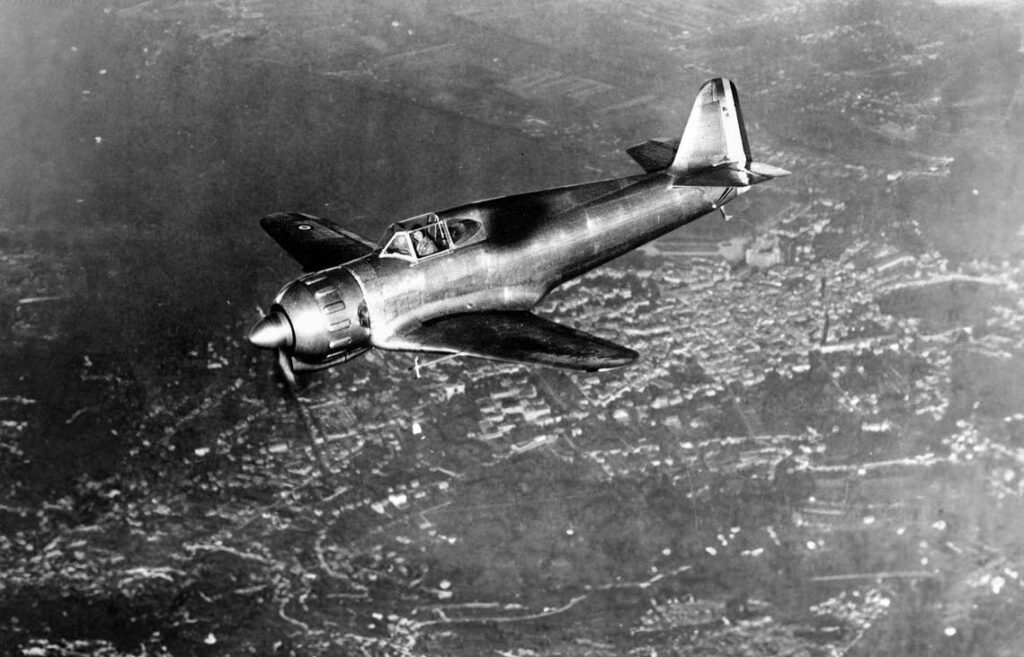The Bloch MB.152, a French WWII fighter, known for its robust construction, Gnome-Rhône radial engine, and moderate maneuverability in air combat.
This article presents a comprehensive overview of the Bloch MB.152, a French fighter aircraft of World War II. The historical context of its development is discussed, highlighting the strategic needs of France in the late 1930s and the aircraft’s design objectives. The design section details the MB.152’s specifications, including its construction, engine, and armament, along with its advantages and limitations. Performance aspects such as speed, altitude, and range are analyzed, comparing it with contemporary fighters. The article also covers its military use, operational history, and how it fared against enemy aircraft, followed by its post-war status. The conclusion reflects on the MB.152’s role and legacy in aviation history.
The Bloch MB.152 was an important French fighter aircraft that served during the early years of World War II. It represented a key component of France’s air defense during a critical period in European military history.
History of the Development of the Bloch MB.152:
In the late 1930s, as Europe moved towards war, France urgently needed to modernize its air force to counter the growing threat of German military expansion. The MB.152, developed by Société des Avions Marcel Bloch, was an evolution of the earlier MB.150 design. The program was initiated to provide a robust, effective fighter aircraft capable of engaging advanced enemy aircraft.
The MB.152 first flew in December 1938. Its development was a response to the French Air Ministry’s requirement for a new generation of more powerful and better-armed fighters. The aircraft was designed to address the limitations of previous French fighters, incorporating a more powerful engine and improved armament.
Design of the Bloch MB.152:
The Bloch MB.152 was a single-seat, all-metal monoplane with a wingspan of 10.54 meters (34 feet 6 inches) and a length of 9.10 meters (29 feet 10 inches). It was powered by a Gnome-Rhône 14N radial engine, which provided better performance than its predecessors.
The aircraft was armed with two 20 mm Hispano-Suiza cannons and two 7.5 mm MAC 1934 machine guns, offering substantial firepower. It featured a closed cockpit, retractable landing gear, and a relatively streamlined design for improved aerodynamics.
However, the MB.152 had its drawbacks. Its radial engine, while powerful, made the aircraft less aerodynamic compared to its contemporaries with inline engines. Additionally, it was less maneuverable and had a slower rate of climb than some of its adversaries, such as the German Messerschmitt Bf 109.

Performance of the Bloch MB.152:
In terms of performance, the MB.152 was a respectable but not outstanding fighter. It reached a top speed of around 505 km/h (314 mph) and had a service ceiling of approximately 10,000 meters (32,808 feet). Its operational range was about 540 kilometers (335 miles).
Compared to other fighters of its era, the MB.152 was slower and less agile. However, it was praised for its robust construction, which allowed it to withstand significant battle damage.
Military Use and Combat of the Bloch MB.152:
The Bloch MB.152 saw extensive use during the early years of World War II, particularly in the Battle of France in 1940. It faced formidable opponents, including the German Bf 109 and Focke-Wulf Fw 190.
While the MB.152 was outclassed by these more advanced fighters, it nonetheless contributed significantly to France’s air defense efforts. Its armament made it effective in air-to-air combat and ground-attack missions.
After France’s armistice with Germany in 1940, the MB.152 saw limited use. It was not exported to other countries and was quickly surpassed by more advanced aircraft designs.
The Bloch MB.152 holds an important place in the history of French aviation. Although it was not the most advanced fighter of its time, its service during a crucial period of World War II demonstrated the challenges and rapid advancements in military aviation technology of the era. The MB.152’s legacy is reflective of France’s efforts to defend its skies during a tumultuous period in European history.
Back to the Warbirds section.